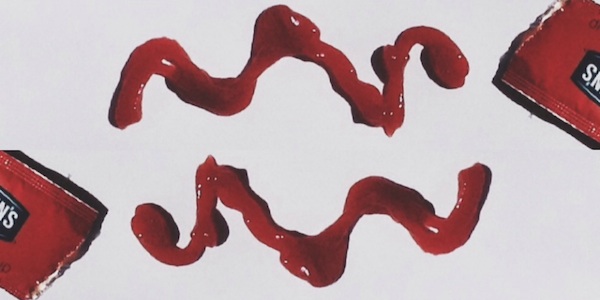The curious case of ketchup
You have been eating bad ketchup all your life. But, well, so have I. To be frank, my neighbor, your neighbor and practically everyone you know is also guilty of this crime. Come to think of it, if I had asked the names of more than three brands of ketchup, not many of us would have made it past Heinz. This begs the question: if mustard comes in dozens of varieties, why has ketchup stayed the same?
Ketchup made its debut in the nineteenth century, when the American love for the tomato met the English tradition of sauces to produce a staple of the culinary realm. Unfortunately, not many of us have tasted nineteenth-century ketchup, characterized by its thin texture, strong tomato taste and use of vinegar. Modern ketchup as we know it came from a dispute over the use of benzoate, a preservative widely used in nineteenth century condiments. When the chief of the Bureau of Chemistry in the Department of Agriculture announced that this preservative was not safe, the ketchup world was divided. On one side stood the traditional ketchup establishment, arguing that it was impossible to make ketchup without the use of benzoates. On the other, a band of unorthodox ketchup manufacturers maintained that they could make ketchup through the clever application of culinary science.
By increasing the concentration of vinegar in their benzoate-free ketchup sauces, essentially pickling the tomato, they were able to make superior ketchup. This new, arguably better-tasting ketchup made benzoate condiments obsolete, and the rebel ketchup makers emerged victorious. The leader of this group was none other than Henry J. Heinz.
By overthrowing the condiment establishment, Heinz can be credited as the man who changed the flavor of ketchup to what it is today. Years of refining led to the ketchup taste that we know and love: initially sweet and salty, followed by sour, and finishing off with umami and bitter flavors. Not many products in our local supermarket can dominate our sensory spectrum like that.
It might not be a surprise that a typical five year-old will consume roughly 60% more ketchup than a typical 40 year-old. At first glance, Heinz’s success with this demographic seems to have no correlation with his ability to create ketchup that covered and overwhelmed all of our gustatory senses. But there is a lesson to be learned from the culinary preferences of five year-olds. Young children, when confronted with strange options on their plates, tend to shy away from new tastes. Cod? Yuck. Spinach? Ew. Five year-olds, therefore, want to turn the unfamiliar into the familiar. What better way to overpower the taste of spinach than to add a dollop of ketchup, a condiment that delivers sweet, sour, salty, bitter and umami all at the same time?
The Heinz Company now holds a virtual monopoly in the tomato condiment industry. But some, like entrepreneur Jim Wigon, think they can do better. Wigon has a simple vision: create tastier ketchup and build an empire of his own. If only it were that simple. He travels the United States peddling his World’s Best Ketchup, in six flavors, to high-end grocery stores and specialty supermarkets. If you are one of his lucky customers, he’ll pull you in close, show you to a box of toothpicks and a dozen or so open jars of his ketchup and will encourage you to try them all. If you don’t, he’ll beam, “you’re doomed to eat Heinz the rest of your life.”
In a regular demonstration, he’ll impale a meatball on a toothpick, dip it in some of his ketchup and hand it to a potential customer. World’s Best has a higher ratio of tomato solids to liquid than Heinz’s, and the maple syrup gives it an unmistakable sweet kick. “You know why you like it so much?” he’ll say, “Because you’ve been eating bad ketchup all your life!”
But how is Wigon supposed to compete with Heinz? His ketchups are too expensive to be competitive, and he just doesn’t have the reputation Heinz does. No matter how good it is, not many of us have heard about World’s Best Ketchup. But, at the end of the day, that’s not really Wigon’s fault, or ours. Many brands of ketchup have tried adding variety to the tastes that they offered, but ultimately failed. What was true with mustard and the hotdog just didn’t apply to hamburgers and ketchup. Unfortunately, no one seems to know why. Sometimes, ketchup is just ketchup.
Source: Malcolm Gladwell, “What the Dog Saw”

Daniel Almeida is, arguably, the best sleuth in the business. Daniel joined The Talon three years ago, serving as News reporter, News Editor and finally...






